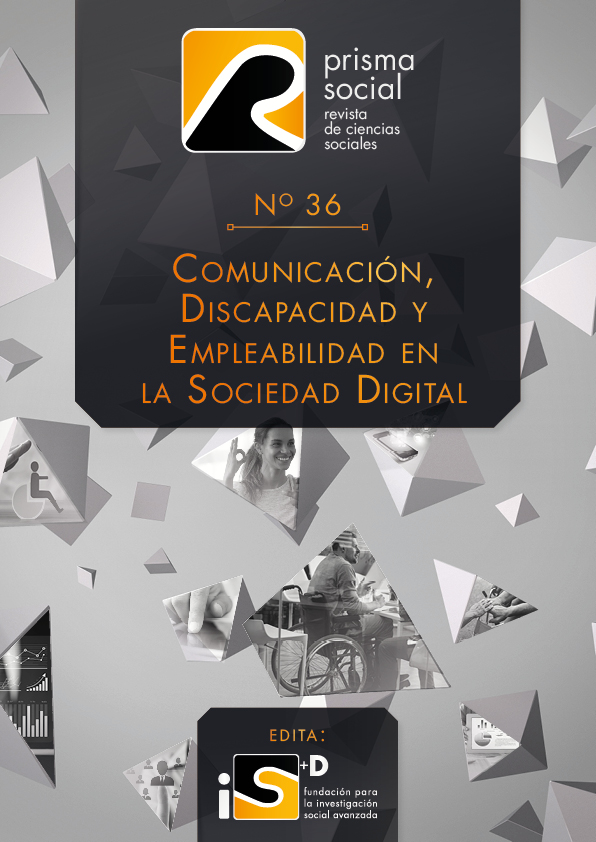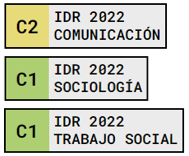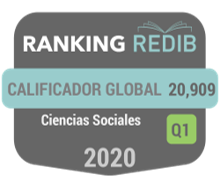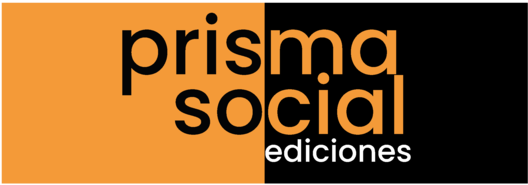Light it up blue, but not in my name: #SoyAutista digital communication and emotions of the autistic collective
Keywords:
disability; autism; blue; identity; social networks; digital communication; Twitter; emotions.Abstract
The present study performs a textual analysis of the content generated on the social network Twitter by profiles of users with autism who, under the hashtag #SoyAutista, address the use of the color blue, proposed by the organization Autism Speaks, as a symbol of identity for those within the spectrum. The period analyzed collects a total of 1,958 tweets that under the aforementioned tag were published throughout 2018. The data were initially treated with the social network analysis program Netlytic for the identification of the most frequently used words in the organic campaign[1] that pointed out the term blue as one of the 30 most relevant. Subsequently, in order to study the emotions expressed, the content of the 79 entries containing the term blue (and others related to it, such as puzzle) was extracted for in-depth analysis, as it constituted one of the most clearly identified topics of interest in the media discourse produced by the group of profiles that, for the most part, rejected its use.
[1] According to the Twitter glossary, "organic" refers to interactions that are generated between users and content through spontaneous, non-promoted posts: https://business.twitter.com/es/help/overview/twitter-ads-glossary.html
Downloads
References
Agarwal, N., Liu, H., Tang, L., y Yu, P. S. (2012). Modeling blogger influence in a community. Social Network Analysis and Mining, 2(2), pp. 139–162. https://doi.org/10.1007/s13278-011-0039-3
Ahmed, W., Bath, P., Sbaffi, L., y Demartini, G. (2018). Measuring the effect of public health campaigns on Twitter: the case of World Autism Awareness Day. [Online]. En Springer Verlag. https://doi.org/10.1007/978-3-319-78105-1_2.
Andrews, E. E., Forber-Pratt, A. J., Mona, L. R., Lund, E. M., Pilarski, C. R., y Balter, R. (2019). #SaytheWord: A disability culture commentary on the erasure of «disability». Rehabilitation Psychology, 64(2), pp. 111-118. psyh. https://doi.org/10.1037/rep0000258
Autismo Europa (2012). European Days of Autism 2012: Autism and the challenges of ageing. Recuperado el 10 de enero de 2022, en: http://www.autismeurope.org/
Begara Iglesias, O., Gómez Sánchez, L. E., y Alcedo Rodríguez, M. Á. (2019). Do young people with Asperger syndrome or intellectual disability use social media and are they cyberbullied or cyberbullies in the same way as their peers? Psicothema, 31.1, pp. 30-37. https://doi.org/doi: 10.7334/psicothema2018.243
Bellon-Harn, M. L., Ni, J., y Manchaiah, V. (2020). Twitter usage about autism spectrum disorder. Autism: the International Journal of Research and Practice, 24(7), pp. 1805–1816. https://doi.org/10.1177/1362361320923173
Jiménez Lara, A. (2018). Informe Olivenza 2018, sobre la situación general de la discapacidad en España. https://www.observatoriodeladiscapacidad.info/wp-content/uploads/2019/04/OED-INFORME-OLIVENZA-2018.pdf
Jiménez Lara, A. y Huete García, A. (2017). Informe Olivenza 2017 sobre la situación general de la discapacidad en España. Recuperado el 10 de enero de 2022 en https://www.observatoriodeladiscapacidad.info/informe-olivenza-2017-2/
Lee, H. E., y Cho, J. (2019). Social Media Use and Well-Being in People with Physical Disabilities: Influence of SNS and Online Community Uses on Social Support, Depression, and Psychological Disposition. Health communication, 34(9), pp. 1043-1052. https://doi.org/10.1080/10410236.2018.1455138
Mazurek, M. O. (2013). Social media use among adults with autism spectrum disorders. Computers in Human Behavior, 29(4), pp. 1709–1714. https://doi.org/10.1016/j.chb.2013.02.004
Ministerio de Sanidad, Servicios Sociales e Igualdad (2015). Estrategia Española en Trastornos del Espectro del Autismo. Recuperada el 23 de octubre de 2021 de https://www.mscbs.gob.es/ssi/discapacidad/informacion/estrategiaEspanolaAutismo.htm
Pegalajar Palomino, M. del C., y Colmenero Ruíz, M. J. (2014). Estudio piloto sobre el uso de las redes sociales en jóvenes con discapacidad intelectual. Edutec. Revista Electrónica De Tecnología Educativa, 48. https://doi.org/10.21556/edutec.2014.48.179
Runswick-Cole, K. (2014). Us’ and ‘them’: The limits and possibilities of a ‘politics of neurodiversity’ in neoliberal times. Disability & Society, 29(7), 1117–1129. doi:10.1080/09687599.2014.910107
Sarkar, T., Forber-Pratt, A. J., Hanebutt, R. y Cohen, M. (2021): «Good morning, Twitter! What are you doing today to support the voice of people with #disability?»: disability and digital organizing, Journal of Community Practice. https://doi.org/10.1080/10705422.2021.1982802
Saha, A., y Agarwal, N. (2015). Demonstrating social support from Autism bloggers community on Twitter. 2015 IEEE/ACM International Conference on Advances in Social Networks Analysis and Mining (ASONAM), pp. 1053–1056. https://doi.org/10.1145/2808797.2809364
Pieta Shakes y Andrew Cashin (2020). An Analysis of Twitter Discourse Regarding Identifying Language for People on the Autism Spectrum, Issues in Mental Health Nursing, 41:3, pp. 221-228. https://doi-org.ezproxy.usal.es/10.1080/01612840.2019.1648617
Suriá Martínez, R. (2012). Redes sociales online y su utilización para mejorar las habilidades sociales en jóvenes con discapacidad. Escritos de Psicología, 5(3), pp. 16-23. https://doi.org/10.5231/psy.writ.2012.1809
Sweet, K. S., LeBlanc, J. K., Stough, L. M., y Sweany, N. W. (2020). Community building and knowledge sharing by individuals with disabilities using social media. Journal of Computer Assisted Learning, 36(1), pp. 1-11.
Wilkinson, D., y Thelwall, M. (2010). Researching Personal Information on the Public Web: Methods and Ethics. Social Science Computer Review, 29(4), pp. 387-401. ttps://doi.org/10.1177/0894439310378979
Downloads
Published
How to Cite
Issue
Section
License
Copyright (c) 2022 Revista Prisma Social

This work is licensed under a Creative Commons Attribution-NonCommercial-NoDerivatives 4.0 International License.
Those authors who publish in this journal accept the following terms:
-
Authors retain copyright.
-
Authors transfer to the journal the right of first publication. The journal also owns the publishing rights.
-
All published contents are governed by an Attribution-NoDerivatives 4.0 International License.
Access the informative version and legal text of the license. By virtue of this, third parties are allowed to use what is published as long as they mention the authorship of the work and the first publication in this journal. If you transform the material, you may not distribute the modified work. -
Authors may make other independent and additional contractual arrangements for non-exclusive distribution of the version of the article published in this journal (e.g., inclusion in an institutional repository or publication in a book) as long as they clearly indicate that the work was first published in this journal.
- Authors are allowed and recommended to publish their work on the Internet (for example on institutional and personal websites), following the publication of, and referencing the journal, as this could lead to constructive exchanges and a more extensive and quick circulation of published works (see The Effect of Open Access).


















